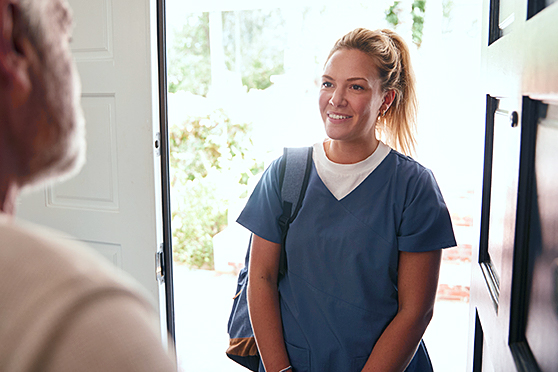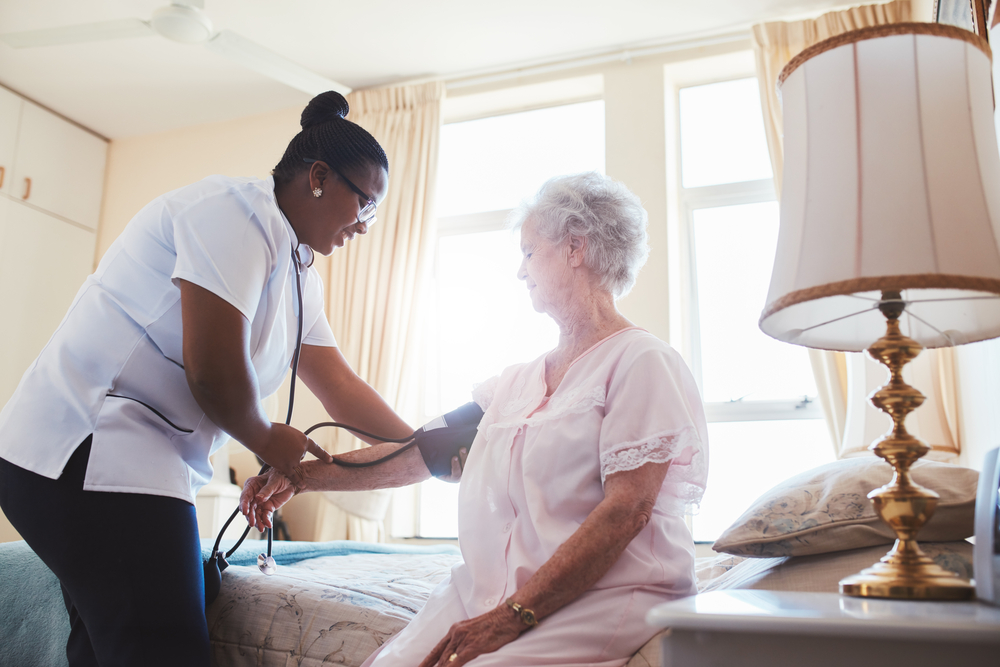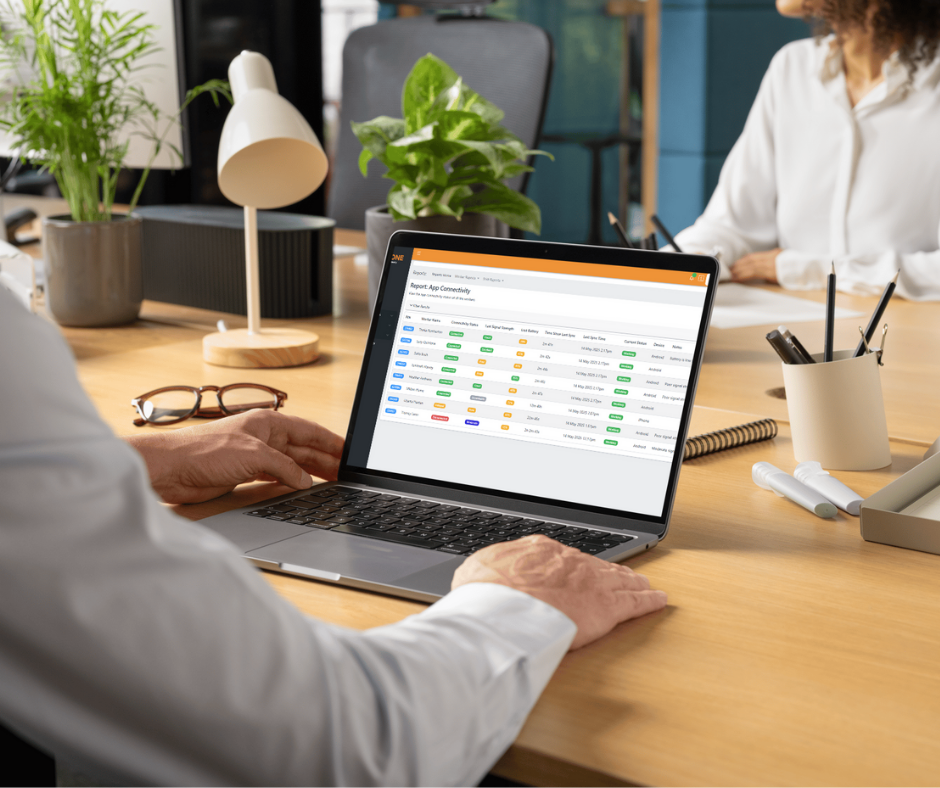Enhancing Safety for Lone Working Health Workers

Lone worker safety is a considerably more complex issue in a home visit environment, compared with providing health care services in a dedicated health care setting. Managing patient care on your own, without the opportunity to call on a co-worker for help, is obviously a risk, one faced by health professionals every time they step into a patient’s home. Patients may live in areas of high crime, in buildings or homes that aren’t safe, with other people who present a risk to your valued staff member or be a threat themselves.
Ok Alone has been working with lone working health professionals for the last ten years, providing them with a vital lifeline, ensuring their safety and security by enabling real-time monitoring and rapid response in emergencies through their safety app.
How Ok Alone Supports Lone Health Workers
Lone worker devices are vital for health workers, especially during home visits or in high-risk environments. Traditional safety tools like standard panic alarms may be inadequate for nurses working alone. Ok Alone's app addresses this by offering automated reminders for regular check-ins, with a high-risk check-in option that allows nurses to adjust the check-in frequency themselves. This feature gives control to health workers to determine the level of danger they feel, especially if dealing with unpredictable or aggressive patients.
A key feature of Ok Alone is its real-time GPS locations. This allows supervisors to know exactly where a visiting nurse is if they send a help alert or miss a check-in. The position is shown on a detailed map within the Ok Alone dashboard and gives a precise location of where to send help.
Ok Alone’s app also has the option for workers to discreetly request help by tapping or shaking their phone, perhaps while in a pocket or behind their back, so as not to escalate a situation or alert the resident that they are requesting assistance. If discretion is not a problem, but accessing the phone is, nursing staff who find themselves in danger can say ‘Siri/Ok Google, get help’ using the app’s hands-free function. This will immediately send an alert to their monitor and inform them that a lone working nurse is in trouble. The monitor will be able to see the worker’s location in real-time and can then send help.
Best Practices for Lone Working Health Workers

Lone working can be safer for health workers with the right combination of employer-initiated safety protocols and practical steps by the nursing staff. Implementing lone working technologies, such as regular check-in systems, significantly enhances worker safety. This not only ensures real-time monitoring and quick response in emergencies but also promotes a sense of security and support among nursing staff.
To further minimize risks, it's essential for nursing staff and supervisors to work together to conduct detailed hazard assessments for each patient visit. This assessment should encompass a variety of factors:
- Understanding the Patient’s Mental Status: Gaining insight into the patient's mental health and potential behavioural challenges, which could include aggression or confusion.
- Hazards of Providing the Necessary Care: Considering risks directly associated with patient care, such as exposure to communicable diseases or the potential for musculoskeletal injuries during physical assistance or movement of the patient.
- Risks from Interactions with Others in the Household: Assessing the dynamics and potential risks posed by other individuals present in the patient's home, including family members, cohabitants or animals.
- Home, Building, or Neighbourhood Dangers: Identifying potential hazards in the patient’s living environment, such as poor lighting, unsafe neighbourhoods, or hazardous conditions within the home.
- Travel Risks: Evaluating the safety of the route and mode of transportation, considering factors like weather conditions and time of day.
By addressing each of these areas, health visitors can better prepare for and navigate the complexities of lone working, ensuring their safety.
Relevant Legislation and Compliance
Unfortunately in our current society it is becoming more common to hear of health workers attacked or even killed at work. During the years 2018-2021 inclusive, the US Bureau of Labor Statistics recorded 124 workplace fatalities in the nursing and residential care facilities sector.¹
Under health and safety laws, employers have a range of legal duties including keeping employees safe at work; providing a safe working environment; assessing any risks to employee health and safety and taking reasonable steps to eliminate or reduce those risks. Employers must implement safe systems of work and ‘control measures’ that prevent or reduce the risks identified as part of the risk assessment ².
Within the United States OSHA does not have a specific requirement to develop and implement a work alone policy, but failure to have a policy could be considered a General Duty OSHA requirement and has been cited by OSHA in the past under the General Duty statute. There are currently no specific OSHA standards for occupational health professionals, however General duty of care is expected to be followed. Although there is not legislation directly linked to home visiting nurses, OSHA is aware of the problems and dangers workers face and have created helpful documentation for those in the profession, two of which are:
Occupational Hazards in Home Healthcare
Guidelines for Preventing Workplace Violence for Healthcare and Social Service Workers
The Guidelines for Preventing Workplace Violence for Healthcare and Social Service Workers has very strong recommendations on what employers should be doing to keep their Community Care Field Workers safe while out on visits.
| Community Care Field Workers (Home Healthcare, Social Service) | |
| Working alone or in secure areas | Ensure workers have means of communication; either cell phones or panic buttons³ |
| Tracking workers | Workers should: - have specific log-in and log-out procedures - be required to contact the office after each visit and managers should have procedures to follow up if workers fail to do so⁴ |
| Security/ silenced alarm systems | - Paging system - GPS tracking - Cell phones (Employers and workers should determine the most effective method for ensuring the safety of workers without negatively impacting working conditions.)⁵ |
*The Workplace Violence Prevention for Healthcare and Social Workers Act has passed the House of representatives twice and is waiting for OSHA to develop a standard for Workplace Violence.
In Connecticut lawmakers recently passed a law to protect healthcare workers in hospitals after they saw an uptick in violence. Now, Senator Saud Anwar said he is looking into what can be done to protect visiting nurses. In the most recent session the Legislator unanimously voted to develop a marketing campaign spearheaded by Senator Martin, which discourages aggressive and violent behaviour towards any healthcare worker in the healthcare setting to begin in January.
Using Ok Alone helps employers comply with their legal responsibilities and duty of care to their employees. The app provides a way for workers to regularly check in and communicate with supervisors, and alert them if there is a problem or they need immediate assistance.
The use of a lone worker safety app reflects a commitment to safeguarding the well-being of health professionals, acknowledging the challenging environments they frequently encounter and reinforcing the importance of their safety as they dedicate themselves to caring for others.
2 - Personal safety when working alone: guidance for members working in health and social care, Royal College of Nursing, September 2016
3 - Pg 19, https://www.osha.gov/sites/default/files/publications/osha3148.pdf
4 - Pg 18, https://www.osha.gov/sites/default/files/publications/osha3148.pdf
5 - Pg 14, https://www.osha.gov/sites/default/files/publications/osha3148.pdf
6 - https://www.wfsb.com/2023/11/01/nurses-lawmakers-push-more-protections-wake-traveling-nurses-death/
7 - https://www.wfsb.com/2023/11/01/nurses-lawmakers-push-more-protections-wake-traveling-nurses-death/
Book a Demo Today
Alternatively, get a free trial of the app
Want to try OK Alone? Click the button below and enter your details. It's free and no credit card is required.





